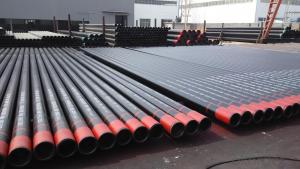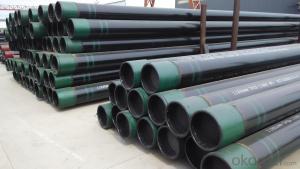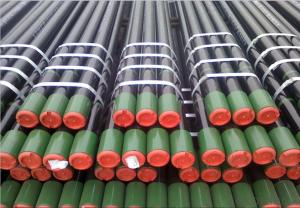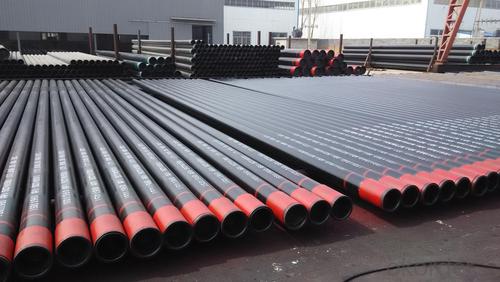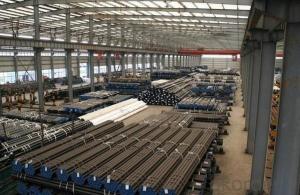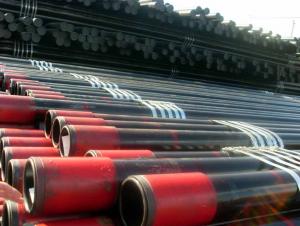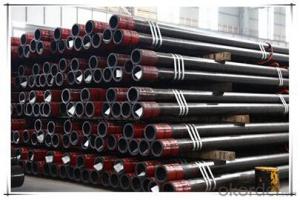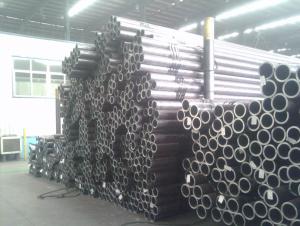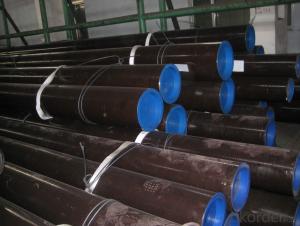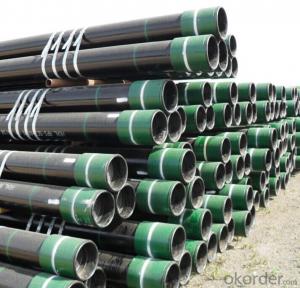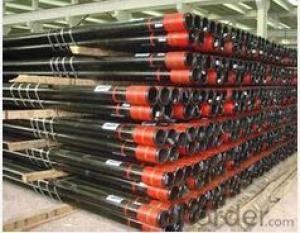API Standard Oil and Gas Well Casing Tube 5CT
- Loading Port:
- Tianjin
- Payment Terms:
- TT OR LC
- Min Order Qty:
- 1000 m.t.
- Supply Capability:
- 20000 m.t./month
OKorder Service Pledge
OKorder Financial Service
You Might Also Like
Specification
Integral-joint tubing upsetting at one end, external threading, and external upsetting at the other end, internal threading. API integral-joint tubing is on the market in OD dimensions of 1.315 to a couple of.063 inch.
API integral-joint tubing provides 10-round form together with a joint strength which is less than the body minimum yield, this reduces its use.
The small OD of integral-joint tubing enables its use inside of larger tubing strings or inside of wells as unloading or vent strings.
The couplings will need to meet all the minimum specifications outlined in API Spec. 5CT. API Spec. 5B3 and API RP 5B14 cover threading, gauging, and thread inspection.
Specifications
| Parameters | Value | |
|---|---|---|
| Material | J55, K55, N80, N80Q, L80, P110, other grade available as your requirement | |
| Outer Diameter | 2-3/8"~4-1/2" (73.02~114.3mm) | |
| Wall Thickness | 4.83~16mm | |
| Forms of Thread | EUE, NUE and Integral-joint | |
| Length Range | R1(20~24ft), R2(28~32ft) | |
| MTR | accordance with API Specification 5CT |
Tolerances
| Parameters | Value | |
|---|---|---|
| Outside diameter | +-0.031 inch (0.79mm) | |
| Wall thickness | -12.5%, positive deviations are limited by pipe weight | |
| Weight Deviation | +6.5% /-3.5% |
Mechanical Properties
| Grade | Tensile Strength (PSI/MPa) | Yield Strenght (PSI/MPa) | ||
|---|---|---|---|---|
| H-40 | No less than 60000(414) | Between 40000 (276) ~ 80000 (552) | ||
| J-55 | No less than 75000 (517) | Between 55000 (379) ~ 80000 (552) | ||
| N-80 | No less than 100000 (689) | Between 80000 (552) ~ 110000 (758) | ||
| P-110 | No less than 125000 (862) | Between 110000 (758) ~ 140000 (965) |
Inspection
Physical properties are checked and each length hydrostatically tested, normally to only 3,000 psi in the plain end (unthreaded) condition. The following are also checked:
Dimensions
Weights
Straightness
Lengths
Part of this inspection is to drift all lengths.
Despite all the American Petroleum Institute (API) specifications and testing, some tubing defects are still found after delivery; thus, some operators do further inspection.
Inspection Method
Size and surface inspection
NDT and pressure test and third party certication
Hydrostatic
Drifting test
Physical and chemicail analysis
Hardness and pressure test.
Electromagnetic
Magnetic particle
Ultrasonic
Dimensions and Weight
| sizes | OD D mm | weight | wt t mm | Type of end | |||||||||||
| 1 | 2 | NU kg/m | EU kg/m | IJ kg/m | |||||||||||
| NU | EU | IJ | |||||||||||||
| H40 | J55 | L80 | N80 1/Q | C90 | T95 | P110 | |||||||||
| 1 | 2 | 3 | 4 | 5 | 6 | 7 | 8 | 9 | 10 | 11 | 12 | 13 | 14 | 15 | 16 |
| 2-3/82-3/8 2-3/8 2-3/8 2-3/8 | 4.004.60 5.80 6.60 7.35 | -4.70 5.95 - 7.45 | – - - - | 60.3260.32 60.32 60.32 60.32 | 5.956.85 8.63 9.82 10.94 | -6.99 8.85 - 11.09 | – - - - | 4.244.83 6.45 7.49 8.53 | PUPNU - - - | PNPNU - - - | PNPNU PNU P PU | PNPNU PNU - - | PNPNU PNU P PU | PNPNU PNU P PU | -PNU PNU - - |
| 2-7/82-7/8 2-7/8 2-7/8 2-7/8 2-7/8 | 6.407.80 8.60 9.35 10.50 11.50 | 6.507.90 8.70 9.45 - - | – - - - - | 73.0273.02 73.02 73.02 73.02 73.02 | 9.5211.61 12.80 13.91 15.63 17.11 | 9.6711.76 12.95 14.06 - - | – - - - - | 5.517.01 7.82 8.64 9.96 11.18 | PNU- - - - - | PNU- - - - - | PNUPNU PNU PU P P | PNUPNU PNU - - - | PNUPNU PNU PU P P | PNUPNU PNU PU P P | PNUPNU PNU - - - |
| 3-1/23-1/2 3-1/2 3-1/2 3-1/2 3-1/2 3-1/2 | 7.709.20 10.20 12.70 14.30 15.50 17.00 | -9.30 - 12.95 - - - | – - - - - - | 88.9088.90 88.90 88.90 88.90 88.90 88.90 | 11.4613.69 15.18 18.90 21.28 23.07 25.30 | -13.84 - 19.27 - - - | – - - - - - | 5.496.45 7.34 9.52 10.92 12.09 13.46 | PNPNU PN - - - - | PNPNU PN - - - - | PNPNU PN PNU P P P | PNPNU PN PNU - - - | PNPNU PN PNU P P P | PNPNU PN PNU P P P | -PNU - PNU - - - |
| 44 4 4 4 4 | 9.5010.70 13.20 16.10 18.90 22.20 | -11.00 - - - - | – - - - - | 101.60101.60 101.60 101.60 101.60 101.60 | 14.14- 19.64 23.96 28.13 33.04 | -16.37 - - - - | – - - - - | 5.746.65 8.38 10.54 12.70 15.49 | PNPU - - - - | PNPU - - - - | PNPU P P P P | PNPU - - - - | PNPU P P P P | PNPU P P P P | – - - - - |
| 4-1/24-1/2 | 12.6015.20 | 12.75- | – | 114.30114.30 | 18.7522.62 | 18.97- | – | 6.888.56 | PNU- | PNU- | PNUP | PNU- | PNUP | PNUP | – |
| 4-1/24-1/2 4-1/2 4-1/2 4-1/2 | 17.0018.90 21.50 23.70 26.10 | – - - - | – - - - | 114.30114.30 114.30 114.30 114.30 | 25.3028.13 32.00 35.27 38.84 | – - - - | – - - - | 9.6510.92 12.70 14.22 16.00 | – - - - | – - - - | PP P P P | – - - - | PP P P P | PP P P P | – - - - |
| P——Plain end;N—Non-upset threaded and coupled;U—External upset threaded and coupled;I—insert joint. | |||||||||||||||
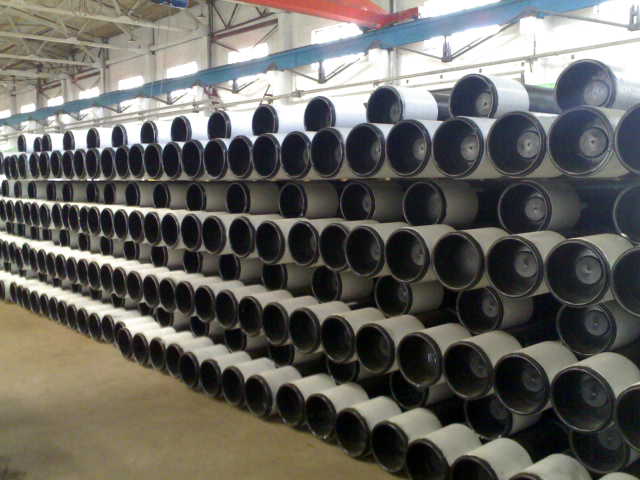
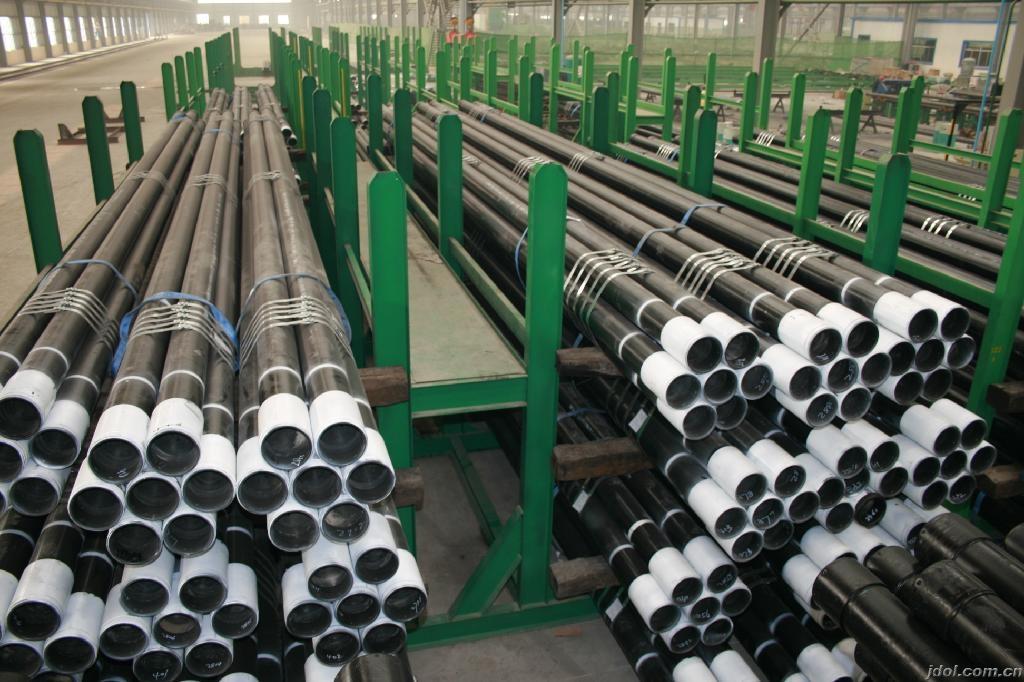
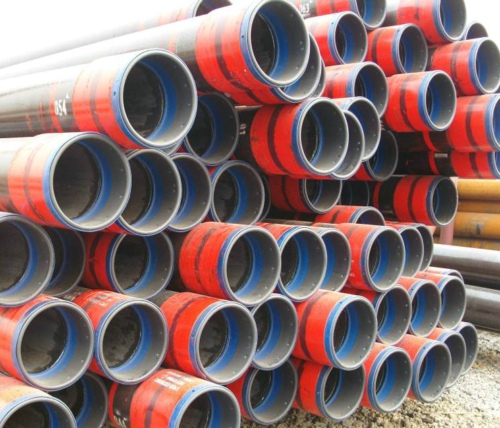
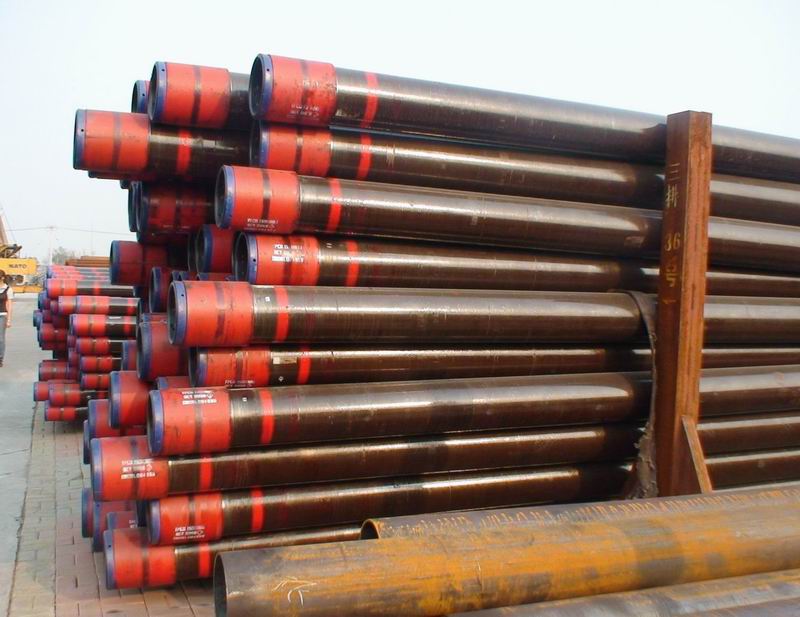
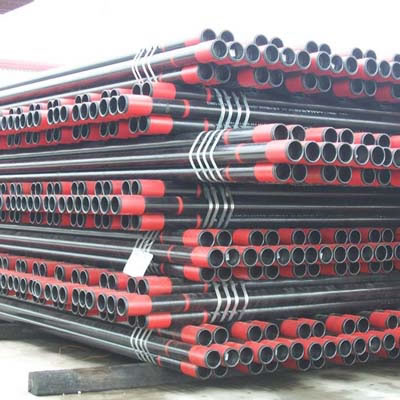
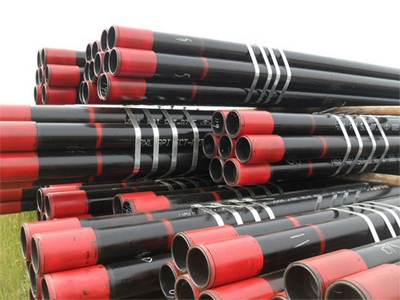
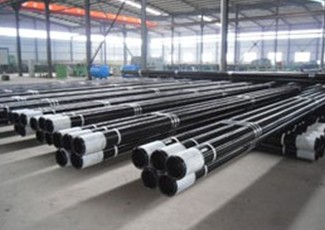
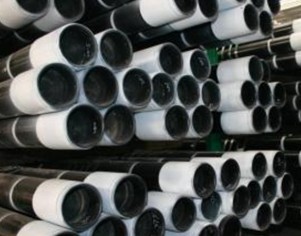
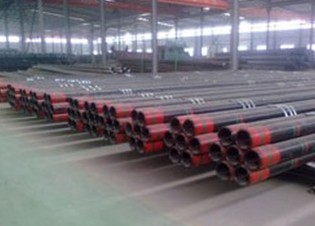
- Q: How are steel pipes used in the manufacturing sector?
- Steel pipes are commonly used in the manufacturing sector for various purposes, such as transporting fluids and gases, providing structural support, and facilitating the flow of materials in manufacturing processes. They are used in industries like construction, oil and gas, automotive, and aerospace for applications such as pipelines, machinery, conveyors, and infrastructure. Steel pipes offer durability, strength, and resistance to corrosion, making them an ideal choice for many manufacturing needs.
- Q: What is the difference between steel pipes and PPR pipes?
- Steel pipes and PPR (Polypropylene Random Copolymer) pipes are two different types of pipes commonly used in various industries and applications. The main difference lies in their material composition and properties. Steel pipes are made from steel, a strong and durable metal. They are known for their high tensile strength, resistance to extreme temperatures, and ability to withstand high pressure. Steel pipes are commonly used for transporting fluids and gases in industries such as oil and gas, construction, and plumbing. On the other hand, PPR pipes are made from a type of plastic called polypropylene random copolymer. PPR pipes are known for their excellent thermal and chemical resistance, as well as their light weight and easy installation. They are commonly used for hot and cold water supply systems, as well as in heating and cooling applications. In summary, the key difference between steel pipes and PPR pipes lies in their material composition and properties. Steel pipes are stronger and more suitable for high-pressure and extreme temperature applications, while PPR pipes are lighter, easier to install, and ideal for water supply systems.
- Q: How are steel pipes used in the construction of gas distribution networks?
- Steel pipes are commonly used in the construction of gas distribution networks due to their durability, strength, and ability to withstand high pressure. These pipes are used to transport natural gas from the source to homes, businesses, and industries. The steel pipes are laid underground and connected using fittings and valves to create a network that efficiently distributes gas. It ensures a safe and reliable delivery of gas to consumers while minimizing the risk of leaks or accidents.
- Q: What is the difference between seamless steel pipe and welded pipe?
- The thicker the diameter, the more commonly the spiral weld. The seamless steel pipe is generally molten state molten steel through the annular slot backlog, and then stretched and other treatment process, so that there is no weld. On the performance, especially the pressure capacity of the steel pipe than ordinary steel has greatly improved, so often used for high voltage equipment.
- Q: What are the different methods of pipe threading for steel pipes?
- There are three main methods of pipe threading for steel pipes: manual threading, machine threading, and roll grooving. Manual threading involves using a handheld threader to create threads on the pipe. Machine threading is done using a power-driven threading machine that automates the threading process. Roll grooving is another method where grooves are formed on the pipe by using a specialized machine, which allows for the connection of pipes using mechanical couplings. Each method has its advantages and is chosen based on the specific requirements and preferences of the project.
- Q: Difference and application of seamless hot rolled pipe and cold drawn pipe in seamless steel tube
- type3.1, seamless steel pipe according to the different production methods can be divided into hot-rolled pipe, cold rolled tube, cold drawn tube, extrusion tube and so on3.2, according to the shape of the classification of circular tubes, special-shaped tubes of the division, except the square tube and rectangular tube, there are elliptical tube, semicircle tube, triangle tube, hexagonal tube, convex shaped tube, plum shaped tube and so on3.3, according to the different material, divided into ordinary carbon structure tube, low alloy structure tube, high quality carbon structure tube, alloy structure tube, stainless steel tube and so on3.4, according to special use, there are boiler tubes, geological pipes, oil pipes and so on
- Q: How do you calculate the pipe pressure loss coefficient for steel pipes?
- To calculate the pipe pressure loss coefficient for steel pipes, you can use the Darcy-Weisbach equation, which is a widely accepted method for determining the pressure loss in pipes due to friction. The equation is as follows: ΔP = f × (L/D) × (V^2/2g) Where: - ΔP is the pressure loss (in units of pressure, such as psi or Pa) - f is the Darcy friction factor (dimensionless) - L is the length of the pipe (in units of length, such as feet or meters) - D is the diameter of the pipe (in units of length, such as feet or meters) - V is the velocity of the fluid flowing through the pipe (in units of velocity, such as ft/s or m/s) - g is the acceleration due to gravity (in units of acceleration, such as ft/s² or m/s²) The Darcy friction factor (f) is a dimensionless parameter that represents the amount of frictional resistance in the pipe. For steel pipes, the friction factor can be determined using the Moody diagram, which is a graphical representation of the relationship between the Reynolds number (Re) and the friction factor (f) for different pipe roughness. To calculate the pressure loss coefficient, you need to find the value of the friction factor (f) based on the Reynolds number (Re) and the relative roughness of the steel pipe (ε/D). The Reynolds number is given by: Re = (ρ × V × D) / μ Where: - ρ is the density of the fluid (in units of mass per unit volume, such as lb/ft³ or kg/m³) - V is the velocity of the fluid (in units of velocity, such as ft/s or m/s) - D is the diameter of the pipe (in units of length, such as feet or meters) - μ is the dynamic viscosity of the fluid (in units of force per unit area per unit time, such as lb/ft·s or kg/m·s) Once you have the Reynolds number (Re) and the relative roughness (ε/D), you can use the Moody diagram to find the corresponding friction factor (f). The pressure loss coefficient (K) can then be calculated as: K = f × (L/D) Where: - L is the length of the pipe (in units of length, such as feet or meters) - D is the diameter of the pipe (in units of length, such as feet or meters) By using the Darcy-Weisbach equation and the Moody diagram, you can accurately calculate the pressure loss coefficient for steel pipes, which is essential for designing and analyzing fluid flow systems.
- Q: What are the uses of seamless steel tubes?
- A large number of pipes used for conveying fluids, such as pipelines for transporting petroleum, natural gas, gas, water, and certain solid materials.
- Q: Can steel pipes be used for offshore applications?
- Yes, steel pipes can be used for offshore applications. Steel pipes are commonly used in offshore industries due to their durability, strength, and resistance to corrosion. Offshore applications such as oil and gas exploration, drilling, production, and transportation of fluids and gases often require the use of steel pipes. These pipes are designed to withstand harsh and corrosive environments found in offshore locations, including exposure to saltwater, extreme temperatures, and high pressure. Additionally, steel pipes can be manufactured to meet specific requirements for offshore projects, including size, thickness, and material grade, to ensure safety and reliability. Overall, steel pipes are a reliable and widely used choice for offshore applications.
- Q: What are the different methods of pipe joining using steel pipes?
- There are multiple ways to connect steel pipes, each with its own pros and cons. 1. Threaded and coupled: This method includes threading the ends of the steel pipes and using couplings to connect them. It is a cost-effective option, but not suitable for high-pressure or gas applications. 2. Welding: Welding is a popular choice for joining steel pipes. It involves heating the pipe ends and fusing them together through welding. This method creates a strong and leak-proof joint, but it requires skilled labor and can be time-consuming. 3. Grooved: This method involves grooving the ends of the steel pipes and connecting them using mechanical couplings or fittings. It is a reliable and fast option suitable for both high and low-pressure applications, but it requires specialized tools and equipment. 4. Flanged: Flanged joints connect steel pipes using flanges, which are discs with bolt holes. The pipes are aligned and bolted together with gaskets to ensure a secure connection. This method is commonly used for large pipes and high-pressure applications, but it can be expensive and time-consuming to install. 5. Compression: Compression fittings are used to join steel pipes by compressing a ferrule or sleeve against the pipe. This method is quick, easy, and doesn't require special tools. However, it is not suitable for high-pressure or high-temperature applications. 6. Brazing: Brazing involves heating the pipe ends and melting a filler material between them to create a joint. It is a reliable method for HVAC and refrigeration systems, but it requires skilled labor and precise temperature control. When selecting the appropriate method for joining steel pipes, it is crucial to consider the specific requirements of the application, such as pressure, temperature, and material compatibility.
Send your message to us
API Standard Oil and Gas Well Casing Tube 5CT
- Loading Port:
- Tianjin
- Payment Terms:
- TT OR LC
- Min Order Qty:
- 1000 m.t.
- Supply Capability:
- 20000 m.t./month
OKorder Service Pledge
OKorder Financial Service
Similar products
Hot products
Hot Searches
Related keywords
